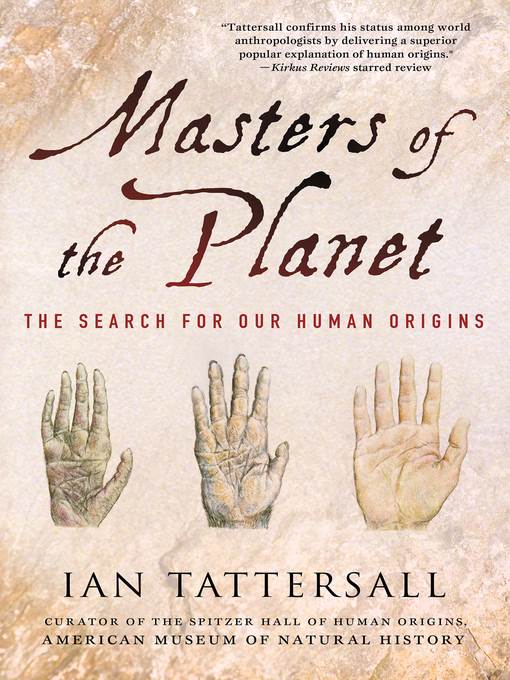
Masters of the Planet
The Search for Our Human Origins
- اطلاعات
- نقد و بررسی
- دیدگاه کاربران
نقد و بررسی

November 14, 2011
Tattersall (The Fossil Trail), a noted expert on human evolution and an emeritus curator at the American Museum of Natural History in New York City, offers a concise history of how humans became humans. He explains how the sparse skeletal remains of ancient human predecessors are studied, how the shape of a molar, the tip of a pelvis, the design of the knee or the ankle all offer clues to the genealogical maps of our past. He revisits the usual suspects: the famous three-million-year-old Lucy; the unprecedented (in 1984) hominid structure of the Turkana Boy; and the 400,000-year-old Heidelberg man. Tattersall moves through the complex fossil records effortlessly and with a welcome sense of wonder. He also consistently conveys a deep knowledge of his subject. His discussion of the origin of symbolic behavior and the many theories that seek to explain early humans’ unprecedented leap in capacity, including the acquisition of language, the development of art, and the ability to deal in the abstract, is provocative and illuminating. Tattersall’s combination of erudition and a conversational style make this is an excellent primer on human evolution. Illus.

Starred review from December 1, 2011
A veteran anthropologist writes a superb overview of how our species developed (a long process) and how we grew smart enough to dominate the planet (a short process in which evolution played little part). Tattersall (Paleontology: A Brief History of Life, 2010, etc.), curator emeritus at the American Museum of Natural History, begins with early hominids, who took the first step away from apedom about five million years ago by rising to walk on two legs. In absorbing detail, he describes two centuries of often-grueling field research that turned up more species that learned to make tools and whose brains slowly grew. For three million years, our small-brained ancestors, the Australopithecus genus, spread throughout Africa before leaving the scene. From about two million years ago, bigger-brained members of genus Homo ranged across Eurasia without making a great impression. Homo sapiens, remarkably young at 200,000 years, did not seem a great improvement until about 60,000 years ago, when their brains began processing information symbolically, leading to language, art, technology and sophisticated social organization, all of which accompanied our species across the world, wiping out competing hominids. While researchers argue over why this happened, Tattersall emphasizes that evolutionary milestones, even dramatic ones like flying, do not happen when new features appear but take advantage of those already present. Feathers existed long before birds flew, and Homo sapiens' brains were always capable of great things. Keeping a critical eye on the evidence and a skeptical one on theories, Tattersall confirms his status among world anthropologists by delivering a superior popular explanation of human origins.
(COPYRIGHT (2011) KIRKUS REVIEWS/NIELSEN BUSINESS MEDIA, INC. ALL RIGHTS RESERVED.)

February 1, 2012
Tattersall (cocurator, Spitzer Hall of Human Origins, American Museum of Natural History) has authored and coauthored over 22 books on human evolution and is currently working on a multivolume project to document the major fossils in the human fossil record. He calls this book a progress report on human paleoanthropology, in which he pulls together the newest discoveries and current theories on the origins of humanity. Most of us learned that human evolution was a single line from the earliest upright apes to Homo sapiens, but Tattersall introduces readers to the wide range of species, many that lived at the same time, that are contenders for places on our ancestral tree. Even more interesting is his discussion of the factors that made us such a successful species and how these traits developed. He extrapolates from the limited physical evidence available what types of environments our precursors lived in as well as their social and mental abilities. VERDICT An excellent book for high school and college students as well as general readers.--Betty Galbraith, Washington State Univ. Lib., Pullman
Copyright 2012 Library Journal, LLC Used with permission.




دیدگاه کاربران